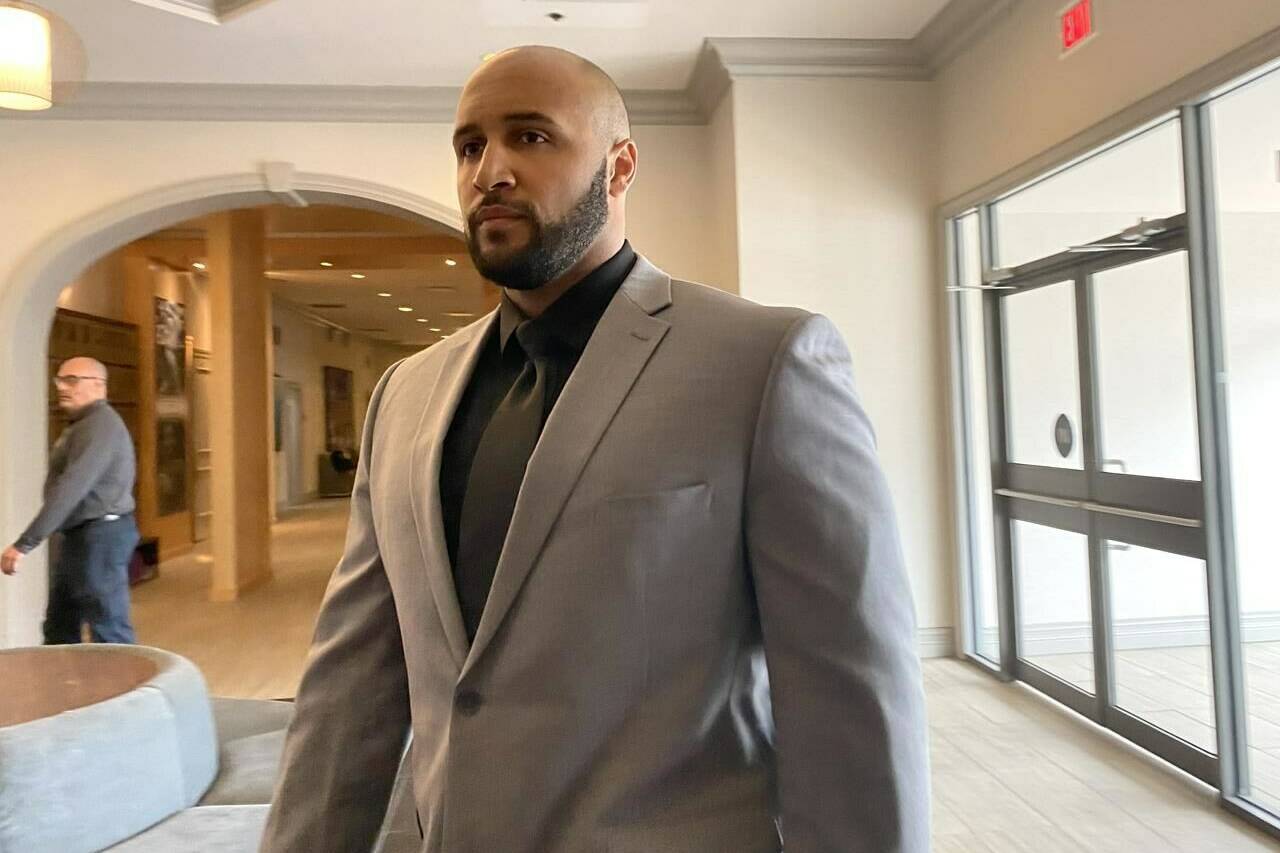An expert in Canadian policing says the New Brunswick officer who killed a 26-year-old B.C. Indigenous woman during a wellness check two years ago was following police training.
Chris Butler told a coroner’s inquest today that Edmundston Police Force Const. Jeremy Son had to use lethal force when Chantel Moore advanced toward him with a knife on the morning of June 4, 2020.
Butler says Moore was only five to seven feet away from the officer on the balcony outside her apartment, adding that she had the ability to inflict grievous harm or death.
Son told the inquest earlier this week that Moore did not respond to his demands to drop the knife and that he shot her four times in rapid succession.
Butler says Son left himself with no exit by backing up on the balcony, but he says it would only be speculation to suggest the outcome would have been different had the officer instead been standing on the stairs.
The five-member coroner’s jury will have the opportunity to make recommendations intended to help prevent future deaths in similar situations.
Moore, a member of the Tla-o-qui-aht First Nation on Vancouver Island was shot twice in the chest, once in the abdomen and once in her left leg, the pathologist who conducted an autopsy on her said Wednesday.
Dr. Marek Godlewski testified on Day 3 of the coroner’s inquest in Fredericton into Moore’s death, and he told jurors Moore died of gunshot wounds.
Moore was killed by a police officer in Edmundston, N.B., on June 4, 2020, during a wellness check after she allegedly advanced toward the responding officer while holding a knife.
Godlewski detailed the entrance points for each bullet and the damage they did, noting that three of the four bullets were retrieved.
Twice during Wednesday’s testimony, Moore’s mother, Martha Martin, became emotional and had to be helped out of the room.
Forensic toxicologist James Wigmore told the inquest that Moore had the equivalent of five beers in her system when she was killed, adding that she would not have shown any serious signs of intoxication.
On Tuesday, Son testified that she was sleeping on a couch inside her apartment when he knocked on the window and woke her at around 2:30 a.m. He said he came to her home following a call from Moore’s ex-boyfriend, who told police about receiving disturbing text messages that seemed to come from someone who may have been stalking her.
Son said Moore appeared to grab something metallic before approaching the door. He said she exited the apartment onto the third-floor balcony holding a knife and looking angry. Son said she advanced toward him and he backed up and told her to drop the knife. He said she didn’t and he fired his handgun four times in rapid succession.
Wigmore was asked Wednesday if the amount of alcohol in Moore’s system would have affected her understanding of the officer’s demand to drop the knife. He said her reaction time “would be delayed, but not significantly.” He added that the toxicology report showed no drugs in Moore’s system.
The shooting was investigated by Quebec’s independent police watchdog — the Bureau des enquêtes indépendantes. François Coiteau, the main investigator, said the bureau gathered evidence and made no conclusions or recommendations to New Brunswick prosecutors.
“We never draw any conclusions or make comments,” Coiteau told the inquest Wednesday.
He said his team was unable to determine the distance between Son and Moore at the time of the shooting. The knife was examined for fingerprints, Coiteau said, adding that only three partial prints were found and they were inconclusive.
The New Brunswick Police Commission also examined the shooting after complaints were filed against Son in August 2020 alleging he improperly used his firearm and abused his authority.
Jean-René Lévesque, an investigator for the commission, told the inquest Wednesday that Son was cleared of the accusations.
Lévesque presented to the inquest a number of videos produced during a re-enactment of the night of the shooting. He said he didn’t think Moore would have been able to see in the dark that Son was a police officer.
The final witness of the day was Alain Lang, who retired last month as chief of the Edmundston Police Force. He said the force only had one working Taser in June 2020, adding that he later ordered enough to have five working units.
Lang said all officers are given training in the use of firearms, Tasers, pepper spray and batons. He said that while Tasers are provided, not all officers use them. “It’s a work tool. They are not compelled to wear it,” he told the jury.
One final witness is expected to be called Thursday. It will then be up to the coroner’s jury to make recommendations aimed at preventing future deaths under similar circumstances.
—Kevin Bissett, The Canadian Press
RELATED: Officer who killed B.C. Indigenous woman during wellness check testifies at inquest
RELATED: Vancouver Island First Nations gather to remember woman fatally shot by police

